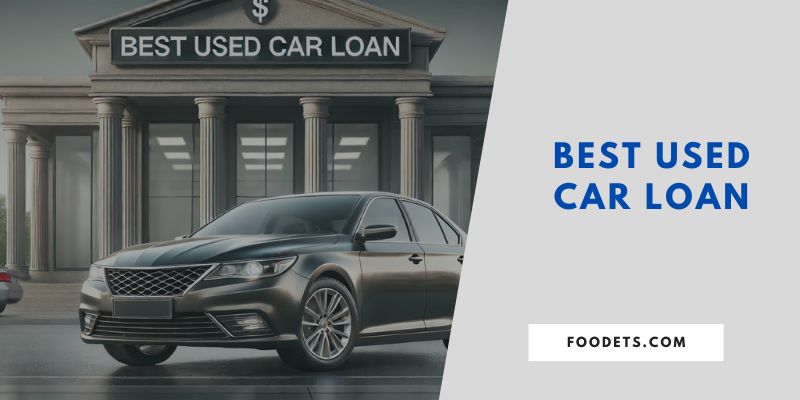My First Used Car Loan (And What I Learned)
I remember my first used car loan. I was young and excited. A friend, Jake, got a bad deal. High interest. Big fees. A payment that made life hard. I didn’t want that. So, I did my homework. I found a loan with a low rate and saved a lot of money. Now, I help others do the same.
If you need a loan for a used car, I want to help. I’ll show you how loans work, where to find the best ones, and how to get the lowest rates. Let’s go!

How Used Car Loans Work
A loan helps you buy a car when you don’t have all the money upfront. Here’s what you need to know:
- Interest Rate – The cost of borrowing money. Lower is better.
- Loan Term – How long you take to repay. Shorter is cheaper.
- Lender – Who gives you the money. Choices include banks, credit unions, and online lenders.
- Approval Factors – Lenders check your credit score, income, and down payment.
Loans also have fees. Some lenders charge an application fee. Others charge early payment fees. Always ask about extra costs before signing anything.
The goal? Pay as little as possible over time.
Where to Find the Best Used Car Loan
Not all lenders are the same. Some offer better deals than others. Here’s where to look:
1. Banks
Pros:
- Good rates if you have great credit
- Easy if you already have an account
Cons:
- Harder to get approved
- Less flexible
2. Credit Unions
Pros:
- Often lower rates than banks
- More personal service
- Willing to work with fair credit
Cons:
- Must be a member
- Fewer locations
3. Online Lenders
Pros:
- Fast and easy to apply
- Competitive rates
- Many offer pre-approval
Cons:
- Some lenders are scams—do research
- No face-to-face help
4. Dealership Loans
Pros:
- Quick and convenient
- Special deals on certified pre-owned (CPO) cars
Cons:
- Higher interest rates
- Dealers add hidden fees
Another option is a peer-to-peer loan. Some websites let people lend money to others. These loans may have flexible terms. They might also have higher interest rates. Be sure to check the fine print.
How to Get the Lowest Loan Rate
Now you know where to look. Here’s how to get the best deal:
- Check Your Credit Score – A high score gets you a lower rate.
- Get Pre-Approved – Know what you qualify for before you shop.
- Compare Lenders – Don’t take the first offer. Look around.
- Negotiate – Loan terms are not final. Ask for better terms.
- Make a Bigger Down Payment – The more you pay upfront, the less you owe.
- Consider a CPO Car – These cars often have lower loan rates.
You can also use a co-signer if your credit is low. A co-signer is someone with good credit who agrees to back your loan. This helps you get a lower rate.
Loan Terms Explained
Here are key parts of a loan:
- APR (Annual Percentage Rate) – The interest plus fees.
- Loan Length – Shorter is better. Long loans cost more in interest.
- Down Payment – More money upfront lowers your loan.
- Total Cost – Look at the full amount you will pay, not just the monthly bill.
A shorter loan term means less interest, but higher monthly payments. A longer loan term means lower monthly payments, but more interest. Choose wisely.
Mistakes to Avoid
- Taking the First Offer – Shop around for the best deal.
- Focusing Only on Monthly Payment – A low payment can mean a costly loan.
- Skipping Pre-Approval – Pre-approval gives you power.
- Ignoring Fees – Watch out for hidden costs.
- Not Checking the Car’s History – A bad car can cost more in repairs later.
Another mistake? Rolling negative equity into a new loan. If you still owe money on your old car, pay it off first. If not, you’ll owe more than the car is worth.
Should You Finance or Pay Cash?
You may ask, “Should I just pay cash?” Let’s compare:
When a Loan Makes Sense:
- You get a low rate and keep your cash for other needs.
- You want to build your credit.
- You prefer to keep savings for emergencies.
When Paying Cash is Best:
- You don’t want any debt.
- You have the money and don’t want to pay interest.
- You won’t drain your savings.
A loan can be a good idea if the rate is low and you need to keep some cash on hand. But if interest rates are high, paying cash saves you money.
Extra Tips for a Smart Car Purchase
- Buy at the Right Time – Dealerships offer better deals at the end of the month, quarter, or year.
- Consider a Private Seller – You may get a better price than a dealership.
- Check the Vehicle History Report – Avoid cars with past accidents or major repairs.
- Get an Inspection – Have a mechanic check the car before buying.
- Understand Warranty Options – Some used cars still have factory warranties. Others come with limited dealer warranties.
Final Thoughts
Getting a good car loan is easy if you plan ahead.
- Know your credit score.
- Get pre-approved.
- Compare offers.
- Negotiate.
- Avoid extra fees.
Follow these steps, and you’ll get a great deal. Drive away happy—and save money!